|
|
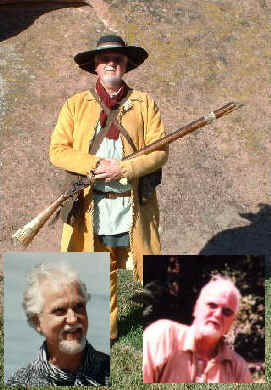
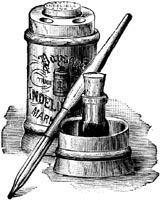
BUCK CONNER
Staff Writer
|
INTO THE
WOODS
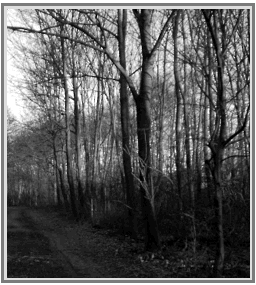
|
|
|
.....
|
|
__________________________________________
|
I have always
been interested in the tools and skill needed in
building primitive structures like our forefather's
would have lived in or helped in the construction
of. Always looking when in a library, book store or
on the Internet for such information pertaining to
such matters. A while back I found a website and
with further searching found the actual location in
Canada of this work in process.
|
|
Black
Creek Pioneer Village
1000 Murray Ross Parkway
Toronto, Ontario, Canada
M3J 2P3
t: 416.736.1733
|
Hours:
11-4 seven days a week, from May 1st to Christmas.
The museum will be open for Spring Break 2012
from March 10-18. It will re-open again for the
season starting May 1st. |
http://www.dalzielbarn.com/home.html
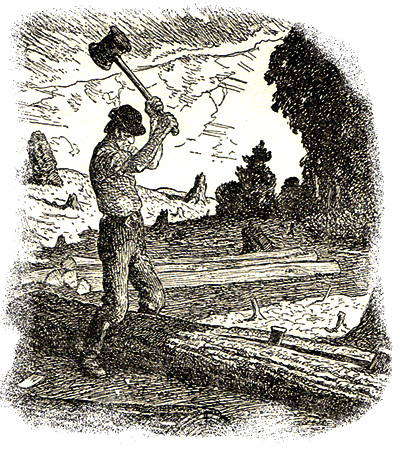
|
|
A
tool should do half the work. Here are some of the
tools that were used to build the Dalziel Barn. Even
a small axe can fell a big tree... or build a log
barn to stand for 200 years.
Here's
a few of the pictures of the hand tools needed in
the making of building materials needed for your new
home or out buildings. Like we all have heard as far
back as one can remember "a picture is worth
a thousand words".
|
Some
of the tools used on the "Dalziel Barn".
|
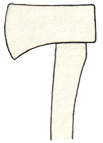
American
Felling Axe
Was
more durable than the English axe but not as
sharp. The American axe became the standard in
because, when out in the bush, you could chop with
a dull blade, but not a broken one.
|
|
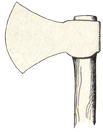
English
Felling Axe
Used
for chopping trees, scoring logs, and splitting
wood for the fire.
|
|
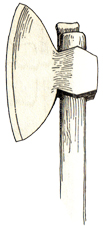
Hewing
/ Broad Axe
Used
for hewing/squaring logs for the cabin or barn.
The handle/helve was off-set so the hewer could
stand over the log while shaving the appropriate
side. To ensure the log edge would be as smooth as
possible the blade of the hewing axe was flat on
one side.
|
|
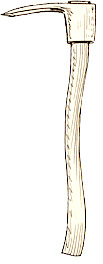
Adze
Used
with the hewing axe to make the log faces as
smooth as possible. Any divots, chunks, or
"juggle marks" in the logs made by the
hewing axe allow water to penetrate the wood,
creating rot.
|
|
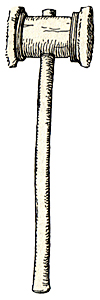
Beetle
This
fat, heavy hammer was used for big jobs. Its
diameter can range from 4 to 7 inches. The beetle
was good for pounding joints into place when
assembling a log structure, banging wooden dowels
and pegs into place when constructing a post &
beam structure.
|
|
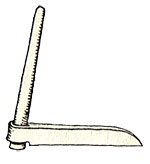
Froe
The
cutting edge was not swung but hammered. The flat
edge could be struck with a mallet, maul, or a
small beetle while the cutting edge split the
wood.
|
|
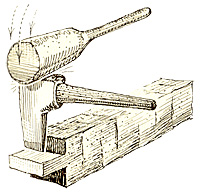
Mortise
Axe
This
edge tool is also hammered but more like a chisel
than a splitter. In this example the mortise axe
is chiseling a tenon from the end of a hewn log.
This tenon will fit into a mortise hole made with
the tools.
|
|
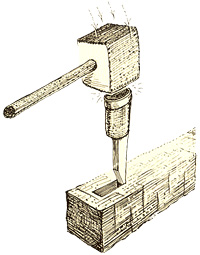
Mortise
Chisel
The
farmer used the mortise chisel to make holes to
match his tenon. To get a square corner to fit the
tenon, a corner chisel was used.
|
|
|
My
wife and I are always looking for places to visit
that are off the beaten track and not the common
tourist traps you run into today. We are doing
further investigation on this location and will
probably have it at the top of our places to visit
when in Canada this fall. I wrote these folks at the
address seen at the beginning of this information
found on their fine website, we thank them for their
efforts and good information provided.
http://www.dalzielbarn.com/home.html
_________________________________________
|
|
|
Good
luck, take care.

Aux
Aliments de Pays !
|
|
__________________________________________
|
|
|
|
Page
13
|
This
website may not be reproduced in part or in whole without the
written permission of the North American Frontiersmen. All
Rights Reserved, Copyrighted 2005-2013.
|
|
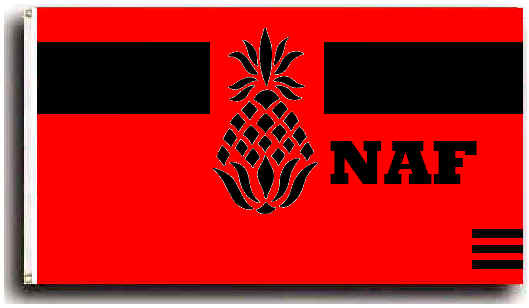 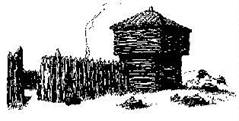
|
|
|